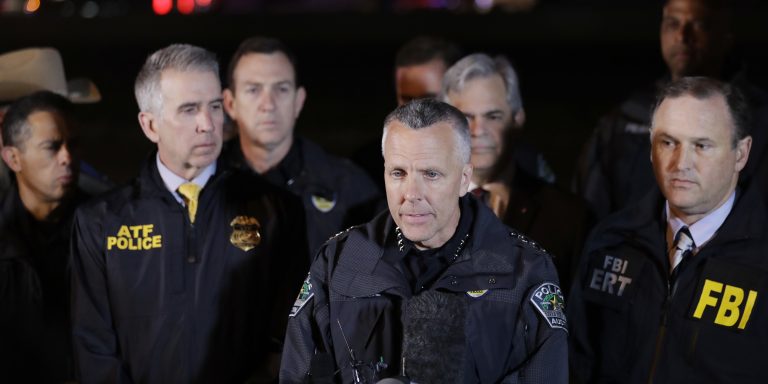INTELBRIEF
March 22, 2018
IntelBrief: The Texas Serial Bombing

- On March 21, the suspect in the Texas serial bombings reportedly blew himself up as authorities were attempting to arrest him.
- The suspect was responsible for two deaths and five injuries from five explosions beginning on March 2; no information about a possible motive was provided to the public.
- The investigation into the bombings was massive, with over 350 agents using cell phone data, shipping manifests, and explosive forensics to identify the perpetrator.
- Such crimes are exceedingly rare and generate public hysteria based on targeting that seems random though likely is not.
.
The terror behind a bombing spree of the sort that has gripped Texas since March 2 is quite rare. Serial bombers, like the suspect in the Texas incidents, identified as Mark Anthony Conditt, generate massive fear because of the seemingly random nature of the targets. Packages left on doorsteps become a source of concern, leading to hundreds of calls to the police, with each call having to be handled with some care because there is an ongoing threat.
On March 2, Anthony Stephan was murdered when he picked up a package left on his porch. On March 12, Draylen Mason was murdered in the same fashion. On the same day as Mason’s murder, a woman was severely injured with another package bomb. All of the packages exploded when picked up. On March 18, two men were injured by a bomb left on a residential road that had a trip-wire, an altogether different style of bomb and one that showed a range and skill that shifted the investigation into overdrive.
Another package exploded at a San Antonio FedEx shipping facility on March 20, with another package found, unexploded, in a FedEx facility in Austin. That last bomb likely provided significant forensic evidence—such as the use of uncommon batteries—that helped quickly narrow the search. Video surveillance at the FedEx facility showed a white male wearing a blond wig dropping off one of the packages.
The investigation was massive, with over 350 agents from federal, state, and local agencies, and is still ongoing even after the death of Mr. Conditt. There is no public information about a possible motive, a vacuum that a fearful and increasingly divided U.S. society will fill with any personal details of the suspect’s life, cherry-picked to fit a point of view. Serial bombings are different than many other crimes in that they have a long lead time and require some methodical planning and skill – and the first incidents are understandably not viewed as the first of more to come. The shift in modus operandi (MO) with the March 18 trip-wire bomb led some to assess the bomber had military or some other training. This does not appear to be the case; the suspect was home-schooled and studied at a local community college.
Bombings are relatively rare in the U.S. The accessibility of high-powered semi-automatic firearms makes them the overwhelming choice for mass murders and domestic terrorism. Investigators will work quickly to determine if there are more packages in the shipping pipeline or placed near roads or houses; at the same time, they will focus on any possible co-conspirators who might have helped the suspect gain the knowledge and first-hand skill to make such devices.
.
For tailored research and analysis, please contact: info@thesoufancenter.org
[video width="960" height="540" mp4="https://thesoufancenter.org/wp-content/uploads/2018/03/Final-Edit-1-156.mp4" poster="https://thesoufancenter.org/wp-content/uploads/2018/03/AP_18080393427506-1-e1521718573674.jpg"][/video]